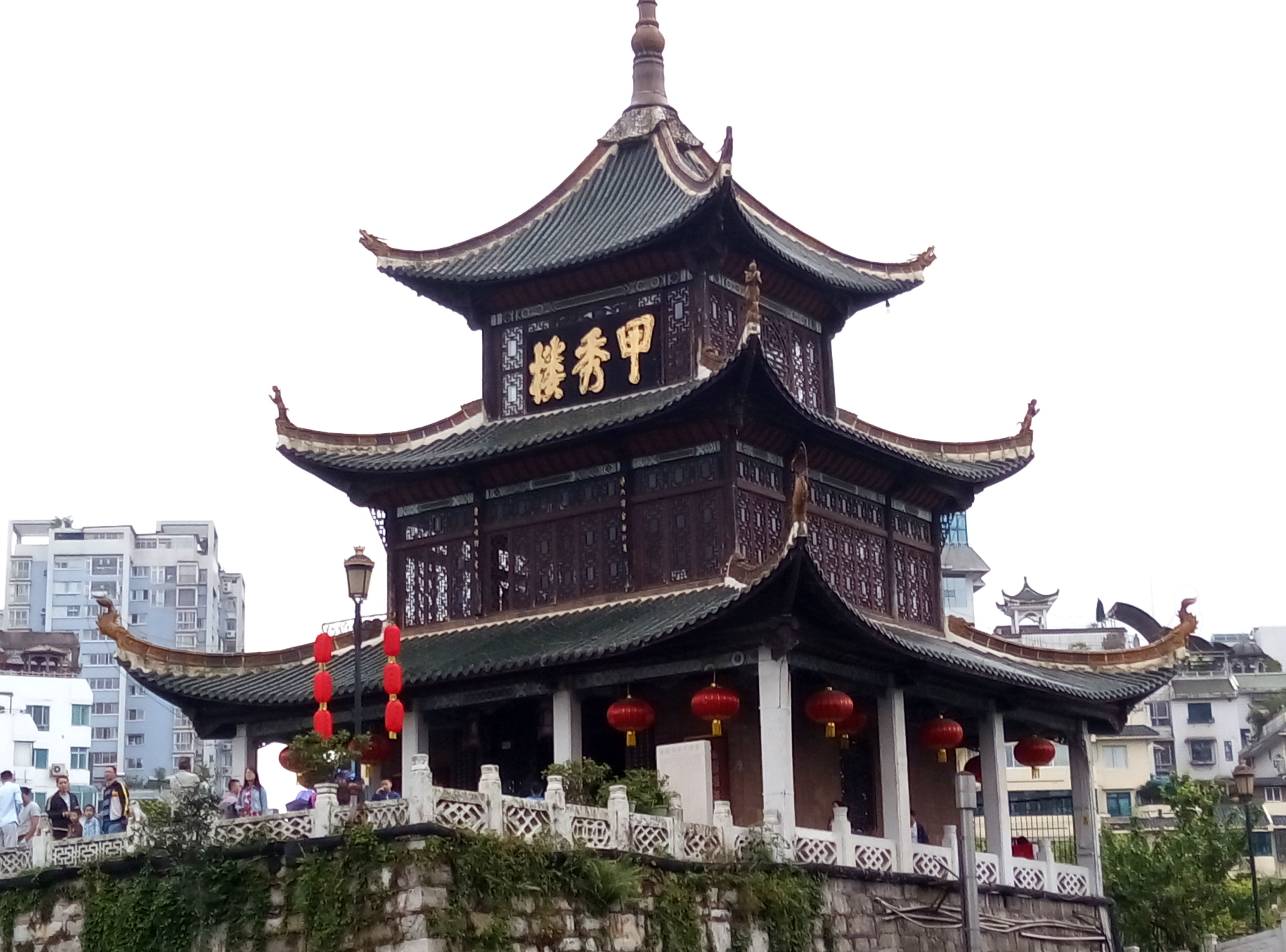


Jiaxiu Tower
Jiaxiu Tower, located in Guiyang, Guizhou Province, China, is a historic pavilion originally built in 1598 during the Ming Dynasty. Perched atop a prominent rock in the Nanming River, the three-story tower stands approximately 20 meters tall and is renowned for its elegant architecture and cultural significance. Over the centuries, Jiaxiu Tower has undergone several renovations but has retained its classical charm. The interior houses a collection of calligraphy, paintings, and ancient literary works, reflecting the rich cultural heritage of the region. The surrounding area, including the Fuyu Bridge and Cuiwei Garden, complements the tower's scenic beauty, making it a popular destination for both tourists and locals.
Information
Ticket price
Time
Location
8 Cuiwei巷, Nanming District, Guiyang, Guizhou, China
View maps
More about the trip
Jiaxiu Tower: Guiyang's Iconic Riverside Pavilion
Jiaxiu Tower, located in Guiyang, Guizhou Province, China, is a historic pavilion originally built in 1598 during the Ming Dynasty. Perched atop a prominent rock in the Nanming River, the three-story tower stands approximately 20 meters tall and is renowned for its elegant architecture and cultural significance. Over the centuries, Jiaxiu Tower has undergone several renovations but has retained its classical charm. The interior houses a collection of calligraphy, paintings, and ancient literary works, reflecting the rich cultural heritage of the region. The surrounding area, including the Fuyu Bridge and Cuiwei Garden, complements the tower's scenic beauty, making it a popular destination for both tourists and locals.
What to See and Do
Admire the Architecture: Appreciate the intricate design of the three-story wooden tower, with its traditional Chinese eaves and delicate carvings. It's particularly beautiful when illuminated at night.
Explore the Interior: Inside the tower, you can find exhibitions of historical artifacts, calligraphy, and paintings that tell the story of Guiyang and the tower itself.
Fuyu Bridge (浮玉桥): Cross the Fuyu Bridge, a nine-arched stone bridge that connects the tower to the riverbanks. It offers picturesque views of the tower and the river.
Cuiwei Garden (翠微园): Located on the riverbank near the tower, this small classical garden provides a peaceful setting with traditional pavilions, rockeries, and lush greenery.
Night Views: Jiaxiu Tower is especially enchanting at night when it's beautifully lit up, reflecting on the calm waters of the Nanming River. It's a popular spot for evening strolls and photography.
Best Time to Visit
The tower is suitable for visiting year-round. Evenings are highly recommended for the illuminated views. Spring and autumn offer pleasant weather for exploring the surrounding area.
How to Get There
Jiaxiu Tower is centrally located in Nanming District, Guiyang. It is easily accessible by public transport. Many city buses stop nearby. You can also take a taxi or ride-hailing service.
Travel Tips
Photography: Bring your camera, especially for night photography.
Combine with other city sights: Jiaxiu Tower is a central landmark and can be easily combined with visits to other attractions in Guiyang.
Enjoy the local atmosphere: The area around the tower is often lively with locals enjoying their evening strolls.





